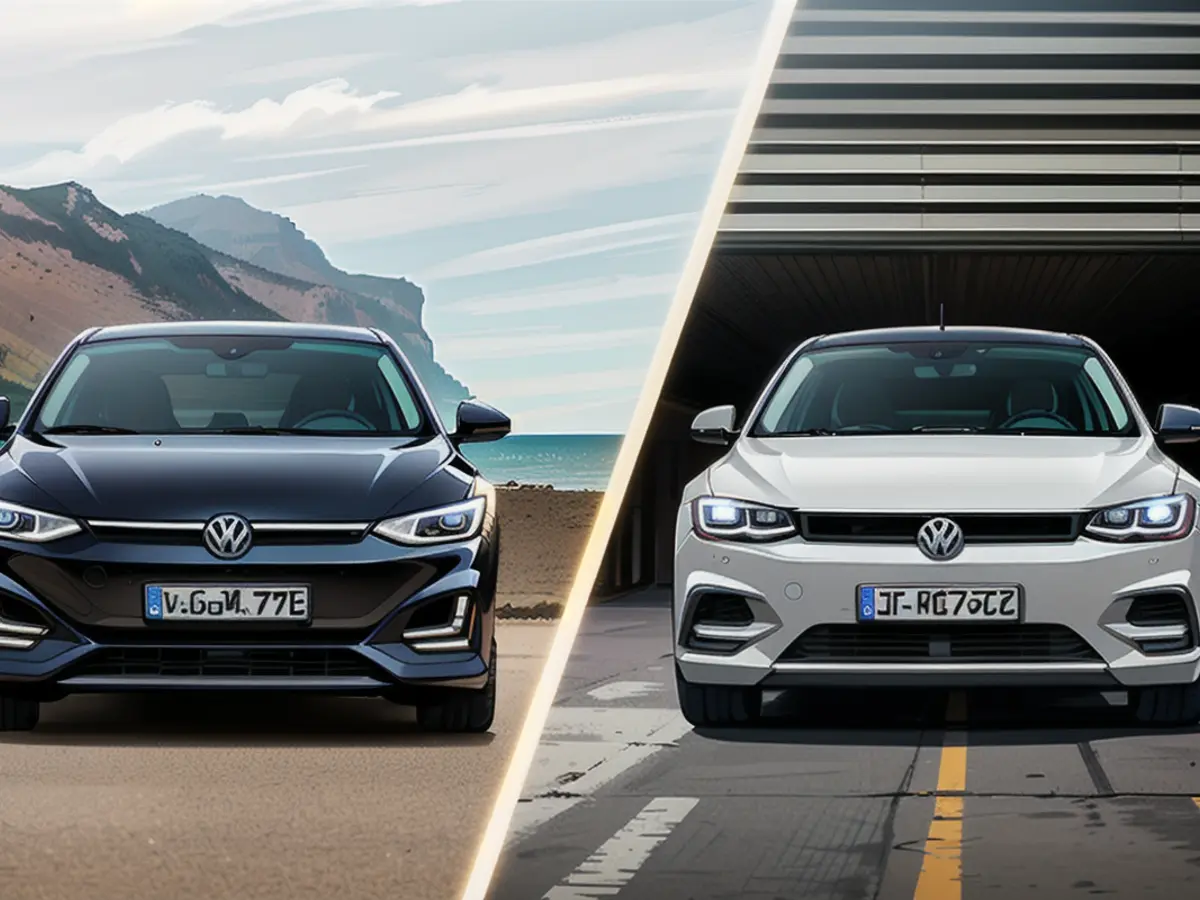Will you choose the VW ID.7 or the Hyundai Ioniq 5?
The middle class is a significant part of the German automobile market. Consequently, this group is crucial for advancing electric mobility. ntv.de examines two distinct ideas in this area.
Electric mobility comes with two major obstacles that, although not entirely accurate, have gained lasting popularity. Affordability and range anxiety are the primary concerns here.
Considering we're discussing the middle class and their needs, it's essential to mention the vehicles under review, the Hyundai Ioniq 5 and the Volkswagen ID.7, are not the most pocket-friendly options available. With external dimensions of 4.64 meters (Ioniq 5) and 4.96 meters (ID.7), both vehicles are substantial, adaptable vehicles. The Hyundai is more inclined towards the lower end, while the Volkswagen leans towards the higher end of this segment.
It's intriguing that the slightly shorter Korean model has a longer wheelbase than the German model (2.97 meters) and offers ample room in the second row. Should you wish to accommodate more individuals for your vacations, both vehicles can accommodate the need.
Let's take a look at their price lists. To purchase the basic Ioniq 5 with the number five (resembling the test model), you need to spend at least €43,900. It's worth noting that the list price does not always determine the final cost, as most cars are now leased or financed.
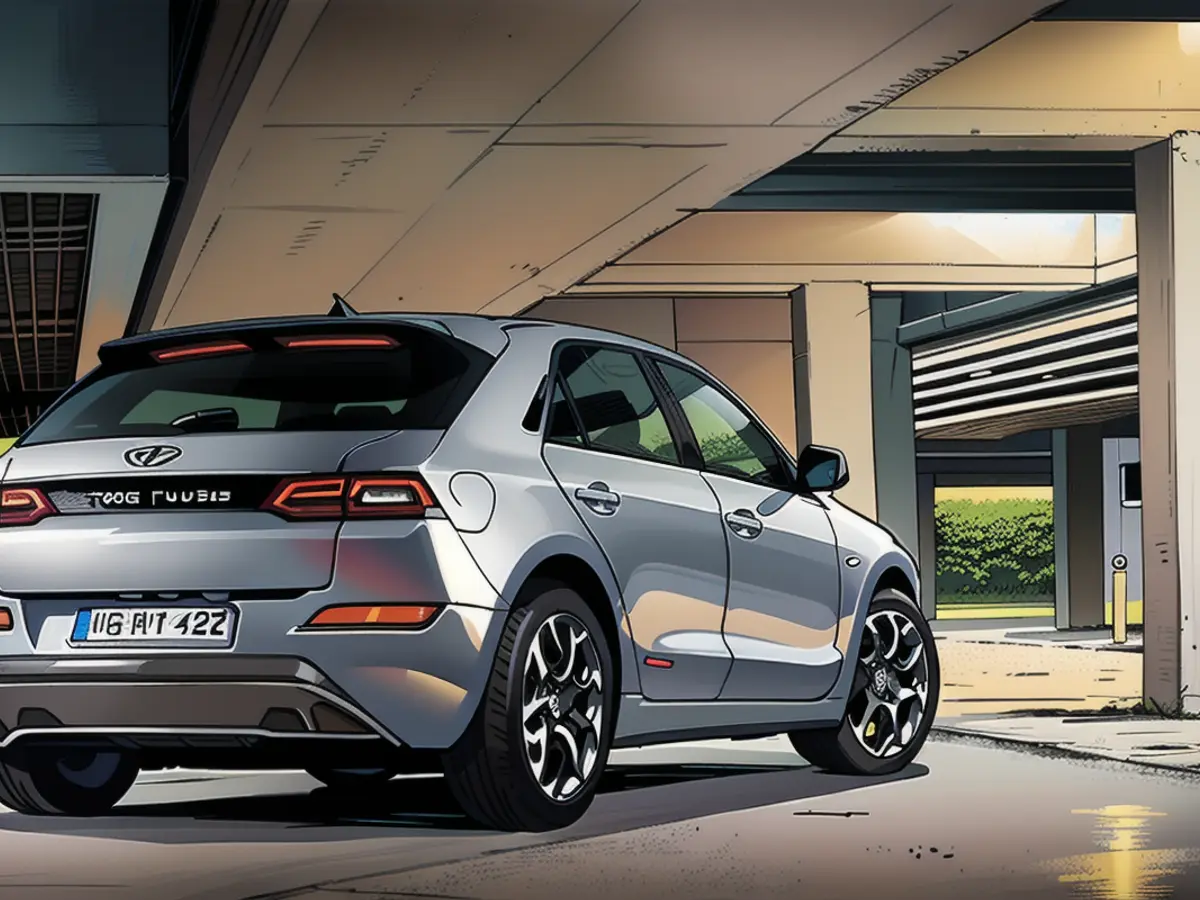
The fundamental model comes equipped with a 58 kWh battery and a peak charging power of 180 kW. This detail is intriguing because the Hyundai functions at 800 volts, while the Volkswagen's Modular Electric Drive System-based ID.7 has a peak charging power of 175 kW at 400 volts.
Individuals seeking longer distances, including weekend getaways, should invest in the version with a 77 kWh battery. Then, the peak charging power is 240 kW, a clear advantage over the ID.7, unavailable for less than €50,425.
Therefore, the topic of long-distance travel must be a consideration before making a purchase. However, charging speeds cannot always be replicated. Occasionally, it's about battery temperature or the regional power grid.
The Volkswagen engineers have made every effort to create maximum transparency, at least displaying the most achievable charging power on the display. You can also see on the large screen how long it takes for the manually activatable battery heater to heat the battery to the correct temperature. At 14°C exterior temperature, it may take over 20 minutes. This information is essential. The ID.7 traversed approximately 250 kilometers in the test, but only under mild weather conditions.
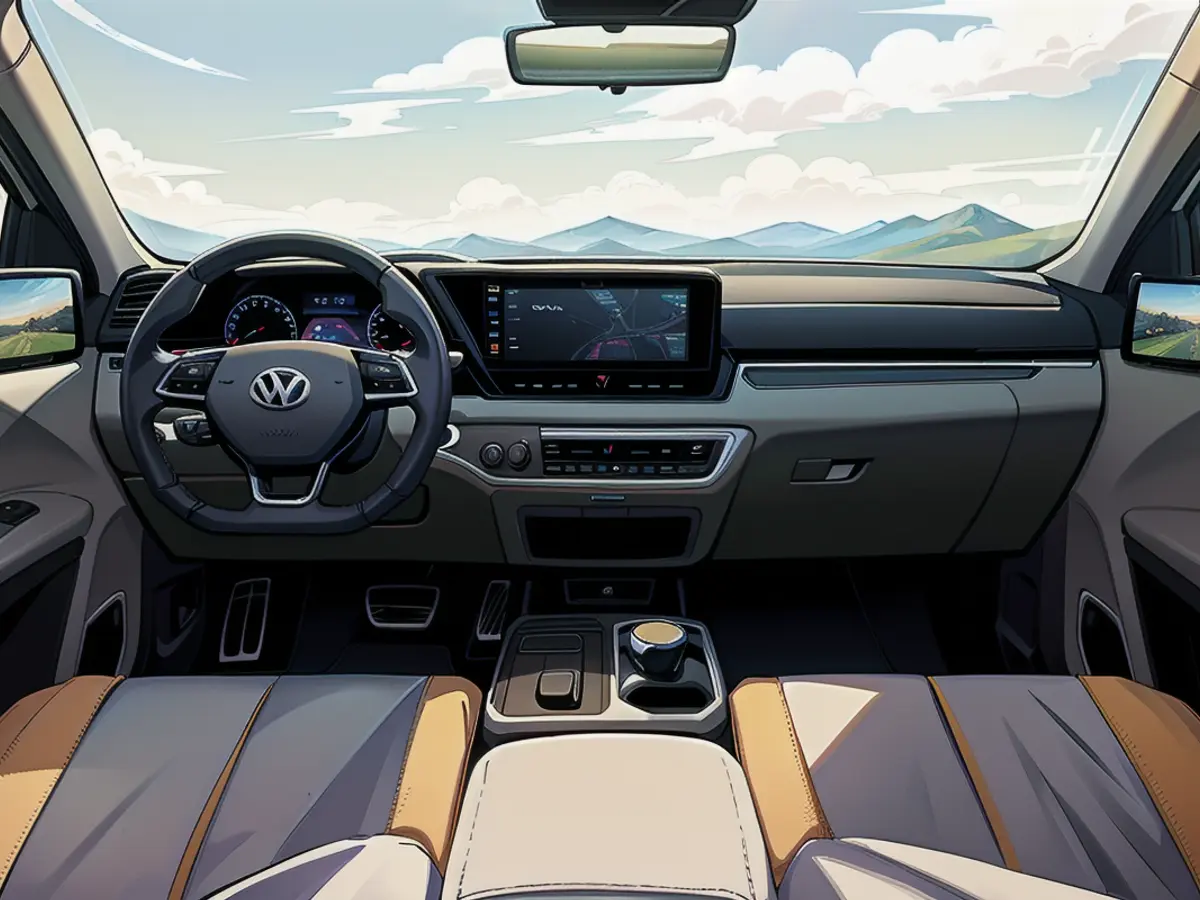
A figure the Ioniq 5 with a small battery has not always been able to reach - especially in cold weather. It can occasionally be as little as 150 kilometers within 20 minutes. However, various variants of the E-GMP platform (Genesis, Hyundai, and Kia) with a larger battery have proven excellent charging performance in multiple tests and allow a nearly depleted battery to be charged to 80% within roughly 20 minutes.
Instruction: Guide to a Question of Practice
If you're not anxious about making contact with the charging station (and there are indeed numerous fast-charging stations in Germany and neighboring countries these days), you can focus on the appealing features of these mid-range electric cars.
Both offers excel in seating, with Volkswagen's paid "ErgoActive" seats in the ID.7 standing out due to their superior massage function in the segment. Volkswagen emphasizes comfort, as evidenced by the finely tuned suspension. Interestingly, you can adjust the damper characteristics via a virtual slider. This is executed in the somewhat lighthearted ID.7 menu, characterized by bright colors and user-friendly navigation.
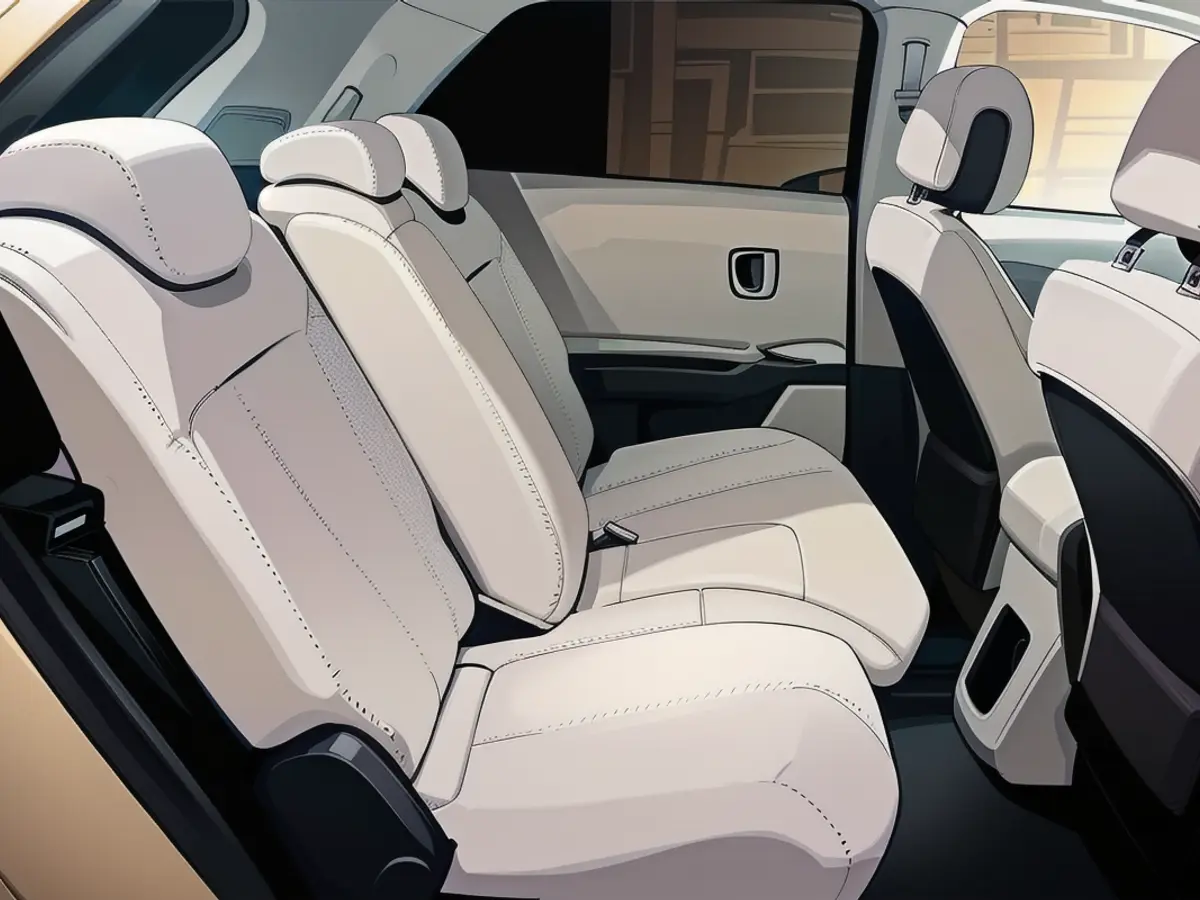
A downside - if one could even call it that - are the still used steering wheel-mounted buttons, which have been overcome in models like Golf, Passat, and Tiguan.
The Ioniq 5, on the other hand, lacks the whimsical feel but offers no shortage of menus. You need to experiment with it yourself to become more acquainted.
170 PS are sufficient
In terms of performance, several options exist, but ntv.de sticks to the ground for now. Specifically, with the Ioniq 5. Thus, 170 PS are adequate for the moment. Honestly? The rear-wheel-drive base model is more than enough. Indeed, you want to move more than 1.9 tons, but accelerating is aided by the front-wheel-drive power distribution, coupled with 350 Newton meters of torque and a single gear (no torque interruption). It takes a mere 8.5 seconds to accelerate from 0 to 100 km/h.
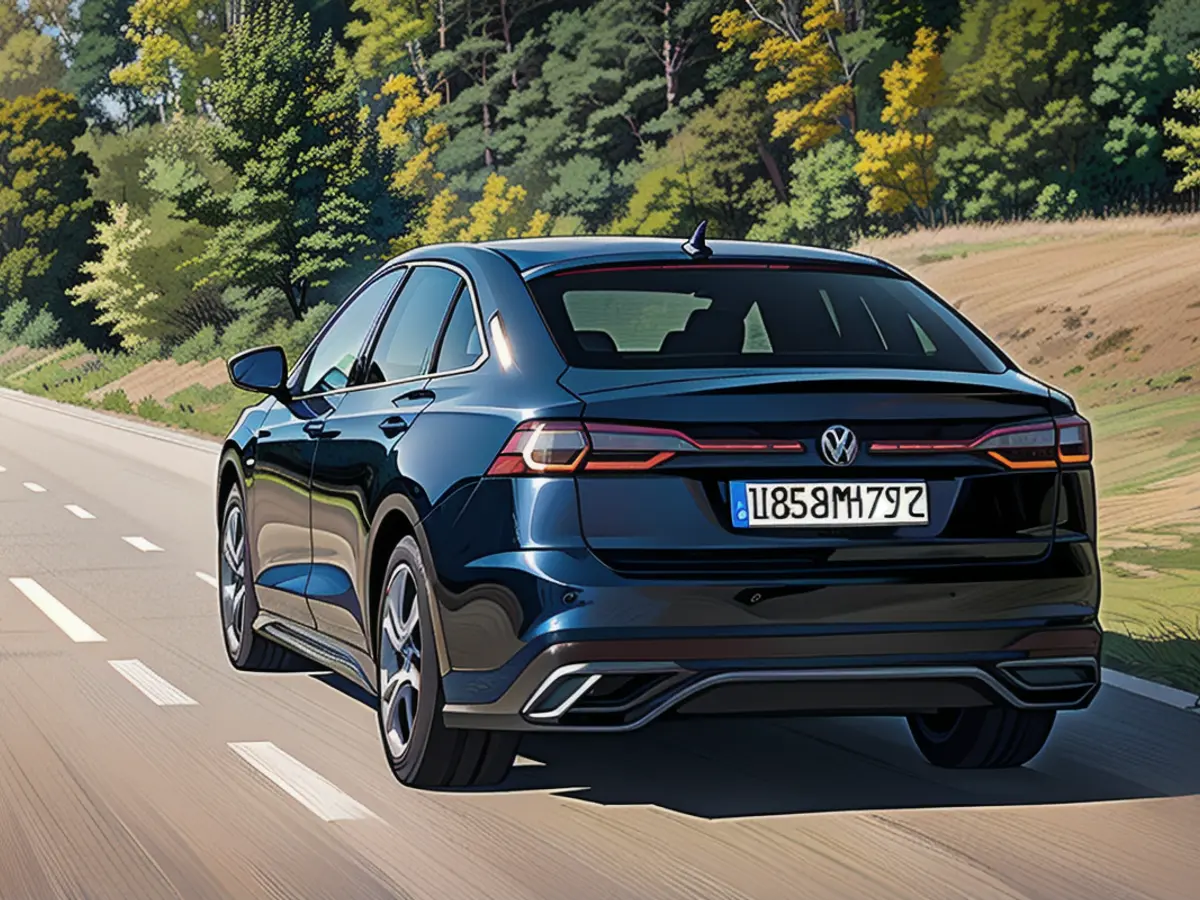
The ID.7, however, isn't available with less than 286 PS, so it starts more quickly from standing still. However, it's also heftier (approximately 200 kilograms heavier) than the Ioniq 5 (more battery capacity), which slightly diminishes the impact of the extra power. Nonetheless, it achieves 100 km/h in athletic 6.5 seconds.
What's it like to have 545 Newton meters at the rear axle? Well, it's not exactly inviting you to push the car to its limits with the steering angle and full load. Maybe you can give that a try with an ID.3 GTX. Neither the ID.3 nor the Hyundai Ioniq 5 are intended for high-speed racing, topping out at 180 km/h for the former and 185 km/h for the latter.
There's a significant reason why Ioniq 5 customers typically choose 229 over 170 PS, which is that the large battery can't be paired with the smaller engine. Additionally, the advertised 384 WLTP kilometers aren't achieved in real life. In low temperatures, the dashboard displays around 300 kilometers left.
The ID.7 doesn't always hit the optimal range specified by the manufacturer either. In reality, it displays about 100 kilometers less than the advertised 621 kilometers. This is an experience that electric vehicle drivers need to get accustomed to.
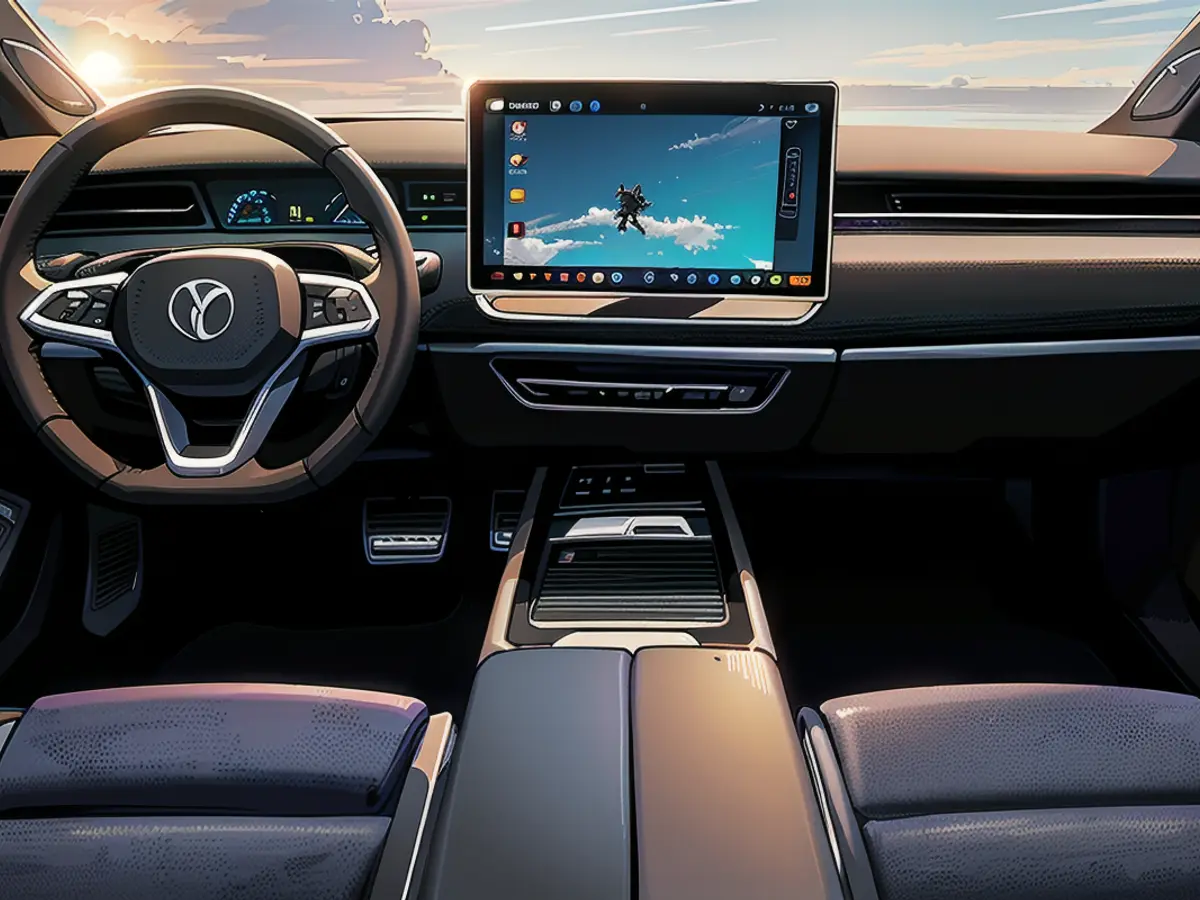
Curiously, Volkswagen is testing a classic sedan in Germany when the more popular wagon is already in development. Despite the wagon's greater popularity, the four-door is still practical since the rear seat backs can be folded and split, increasing the trunk volume to 1,586 liters.
The Ioniq 5 offers the same cargo space with its sloping rear design, except for one liter less than the ID.7. Neither car seems to mind the difference.
Ultimately, is this just a matter of personal preference? Both models provide a unique appearance. Hyundai caters to the retro nostalgia of many by featuring their signature pixel-LED taillights, which have graced other models from the brand. They evoke our 80s vision of the future.
Volkswagen doesn't have those pixels but makes up for it with dynamic turn signals and a few additional features. One notable feature is the large panoramic roof, which can be darkened at the push of a button using electrically activated liquid crystals.
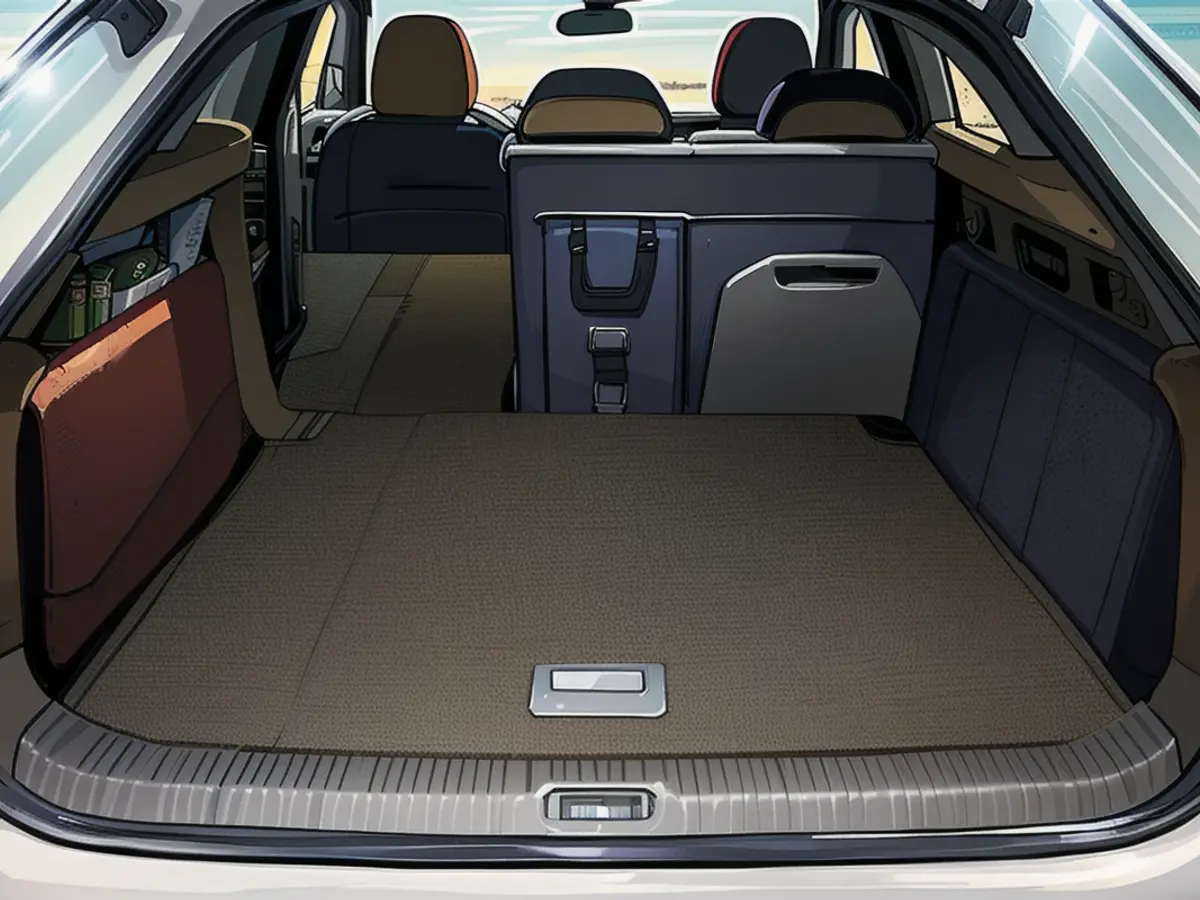
The Ioniq 5 comes in a variety of colors too - 64 of them, to be precise. The ID.7 is also eye-catching with its lit decorative elements. Which of these two distinct midsize electric vehicles you may opt for - they're both unique in their own way. And comfortable. And long-range capable. Despite their long-range abilities, both vehicles require a charging stop at some point. But they don't have any major flaws.
Read also:
- When considering new car options for the middle class, both the Hyundai Ioniq 5 and Volkswagen ID.7 are notable Electromobility models with significant dimensions.
- Although the Volkswagen ID.7 has a higher list price, the Hyundai Ioniq 5's electric powertrain functions at 800 volts, providing a more rapid charging time for Electric cars related concerns.
- With the growing popularity of Automobile Electromobility, car manufacturers like Hyundai and Volkswagen are continually releasing innovative models, such as the Ioniq 5 and ID.7, designed to cater to the demands of the Electric cars market.
- For individuals who prioritize longer distances and faster charging times, the Hyundai Ioniq 5 with its larger battery and higher peak charging power could be a more attractive New car option compared to the Volkswagen ID.7.
